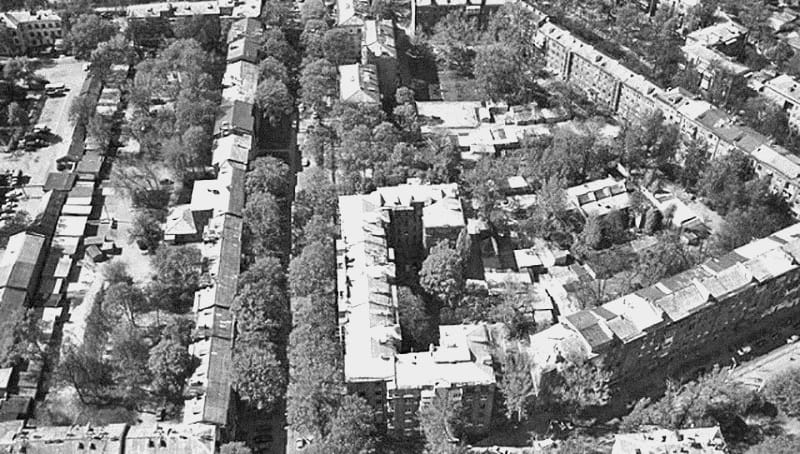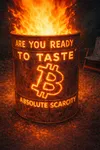In my latest EU-funded adventure through Polish lands, I met a young ukranian woman who currently resides in Austria due to the war. She told me a story that broke my heart and left me reflecting. I won't go into much detail about the story for two reasons:
- I don't really believe the stories that reach me since I can't rule out the possibility that the books (a medium of knowledge transmission for centuries) have been cleaned up. Since the advent of the internet, things have changed, but we are still far from knowing how to differentiate truths from all the noise. So, I decide not to trust the "stories" beyond considering them legends or myths that precede my passage through this reality.
- I am largely ignorant of legends in general, and even more so of the legends of peoples with whom I have had little contact.
Okay, I'm talking about what is known as the Executed Renaissance that took place in the Slovo Building, Kharkiv. The legend says it was a Ukrainian artist who asked to build a building to gather the top intellectuals and artists of Ukraine in the 1920s-1930s. He asked the Soviet government in the mid-20s to construct the building, which would be the home of intellectuals whose mission was to revive Ukrainian culture. The project sought funding from Stalin in February '29, and by December, it was completed. A year later, the first artist was arrested, and another 30 would be arrested and executed in the following years. They persecuted the language, so professors, writers, and others using Ukrainian were persecuted if they did not adapt to the new linguistic laws. For the Soviet authorities, having the artists gathered and located must have been a treat. They tapped the phones and proceeded to arrest, execute, and send to gulags all those they considered opponents.
Once the legend is understood this way, what breaks my heart is that the building was made with good intentions; it wasn't a state proposal to set a trap. Though I think it was well-played by Stalin to fund the trap and wait a year to act, he found it ready-made, but it was very tactical. Ending a generation of artists greatly weakens the spirit of rebellion in a territory. This hunt was later called the Executed Renaissance, for having ended the attempt to elevate Ukrainian literature and culture.
Guy Debord, in the Situationist Manifesto, prophesizes that once the incentives posed by the current (state) capitalist system are gone, we will see the birth of many artistic movements at once. The author puts it this way:
At a higher stage, everyone will become an artist, i.e., inseparably a producer-consumer of total culture creation, which will help the rapid dissolution of the linear criteria of novelty. Everyone will be a situationist so to speak, with a multidimensional inflation of tendencies, experiences, or radically different «schools» – not successively, but simultaneously.
This is where I decide to compare the Slovo Building to the conceptual Bitcoin Island, and I fear: will it be another trap? The very idea makes me sad, but it's true, when we gather, we encourage our enemies to attack us. Of course, a conference in the last years of the FIAT model is not as attackable, but a Bitcoin Island in the early years of the birth of Citadels could be very tempting to the enemies of freedom. A hundred or a thousand bitcoiners out of the game wouldn't end Bitcoin, but it would be a hard blow to the plebs living in the following years. Terror and paranoia are hard to shake off if you feel you're going to be hunted. Of course, in this scenario, the tracking and execution are different, but talent is organizing in the face of this transition. During the phases of chaos and construction, we will see artists and engineers who will play key roles in the reconstruction of society. Their survival favors the speed to reach the new balances that Bitcoin imposes on us. Examples of areas where these virtuosos will intervene: reconstruction of the real estate market, the drug market, public services markets (health, education, security...). The gathering of these artists and engineers generates at least inspiration and facilitates collaboration among them.
Give thanks that our communities are now mainly digital, and occasionally there are some in-person meets. So, this advice is for the plebs who visualize their exit plan from the territory in the coming chaos stages. If you visit Slovo for the variety of inputs it provides, enjoy it but don't stay too long, dear pleb. If you want to build with more artists, try to do it outside of Slovo, minimize your exposure time. Once you have disappeared, you can always reappear.





Related Posts
Napraw pieniądze, Napraw Świat: W stronę osobistej odpowiedzialności i zmiany systemu
Dec 02, 2025
Dlaczego Wybitni Fizycy Wybraliby Bitcoina
Oct 14, 2025
Money: The Next 100 Years
Jul 17, 2025